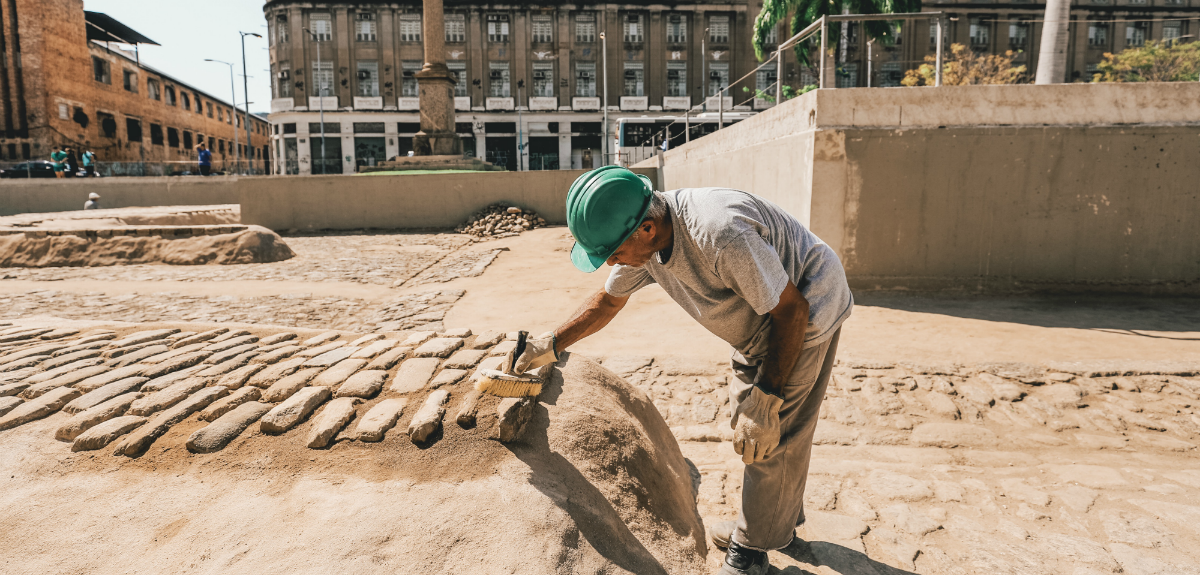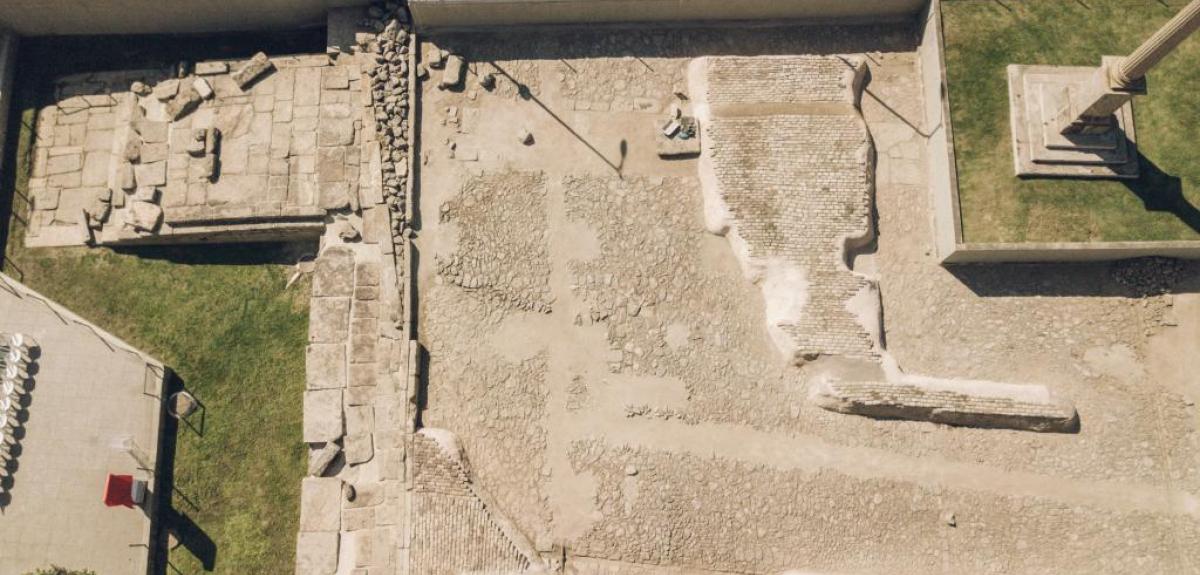Valongo Wharf
The Valongo Wharf Archeological Site was inscribed on the UNESCO World Heritage list in 2017, by virtue of it being the only material vestige of the landing of about one million enslaved Africans in the Americas. The candidacy, led by Brazil’s National Historic and Artistic Heritage Institute (Iphan) and Rio de Janeiro City Hall, was based on a dossier coordinated by anthropologist Milton Guran, whose work brings to light the city’s slave trade history. UNESCO recognition crowned a process that began in 2011 during the revitalization process of the Porto Maravilha neighborhood, when during excavations, thousands of objects such as necklaces, amulets, cowrie-shell divination collections and other pieces used in religious rituals were found at the site.
In 2012, Rio de Janeiro City Hall transformed the space into a protected monument open for public visitation, and Valongo Wharf became an official part of the Historical and Archaeological Circuit for the Celebration of African Heritage, recognizing Afro-Brazilian cultural landmarks in the port area, such as the Hanging Garden of Valongo, the Largo do Depósito, the Pedra do Sal, the José Bonifácio Cultural Center and the Pretos Novos Cemetery.
IDG’s rapprochement with Valongo Wharf was through the Museum of Tomorrow’s Community Relations department, thanks to programs and activities this team created for the surrounding port area’s residents, schools and cultural institutions. One of their main projects called “Mauá 360º” proposes classes, cultural activities and seminars, among other initiatives, designed for the community to share and deepen their knowledge about the region, as well as debating and participating directly in its transformation. The 2017 edition of “Mauá 360º” was dedicated exclusively to Valongo Wharf.
In 2018, the Valongo Wharf Archeological Site received a donation of 2 million reais from the fund of the Consulate General of the United States of America, earmarked for restoration, conservation and consolidation. The project was launched in November, during celebrations for Black Awareness Week. IDG was appointed to manage this first phase of renovations, in partnership with the Consulate, and with the support and supervision of the National Historical and Artistic Heritage Institute (Iphan) and Rio City Hall through the Municipal Department of Culture, the Urban Development Company of the Port Region of Rio de Janeiro (CDURP), the Rio World Heritage Institute (IRPH) and the Afro-Brazilian Historical and Cultural Institute.
After strategic planning and applying for the necessary licensing, IDG started the renovation process in May 2019. During this initial phase, the site’s ruins were restored, and the archeological site was cleaned, sanitized, preserved and consolidated. In September 2019, a second phase for improving infrastructure and signage began, featuring exhibition modules depicting the site’s history and that of the surrounding region, known as Little Africa. Other elements will also be installed, such as a guardrail, monumental scenic lighting, directional signage, security personnel and a camera surveillance system. An educational project aimed at schools in the port region was also developed, as well as communication initiatives designed to inform and inspire the general public about the site’s historical significance.
The resources for this second phase came from State Grid Brazil Holding (SGBH), through the Corporate Social Investments financing line (ISE), made available by Brazil’s National Bank for Economic and Social Development (BNDES).



